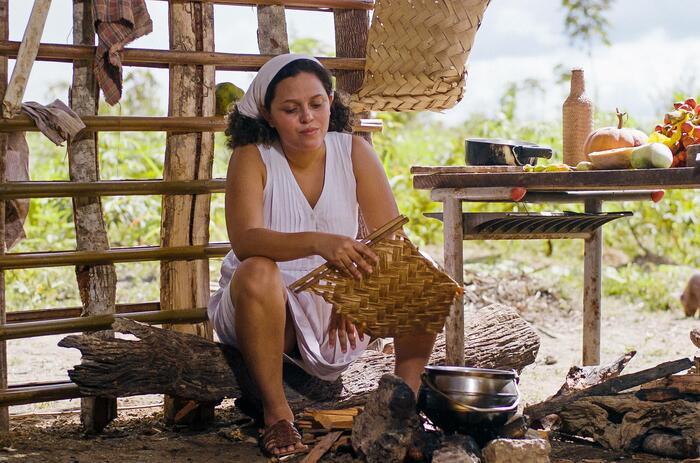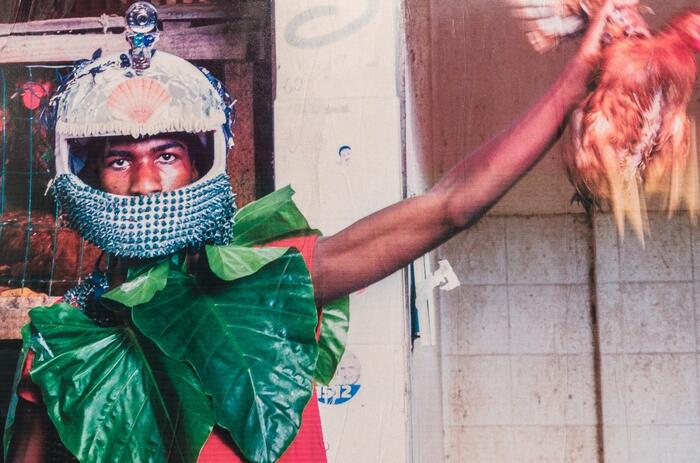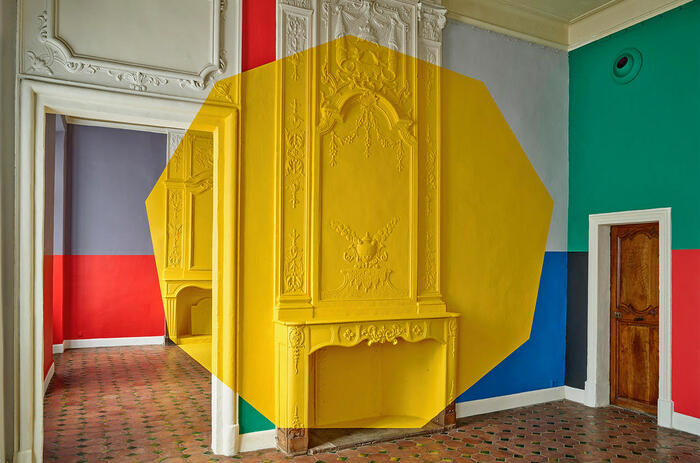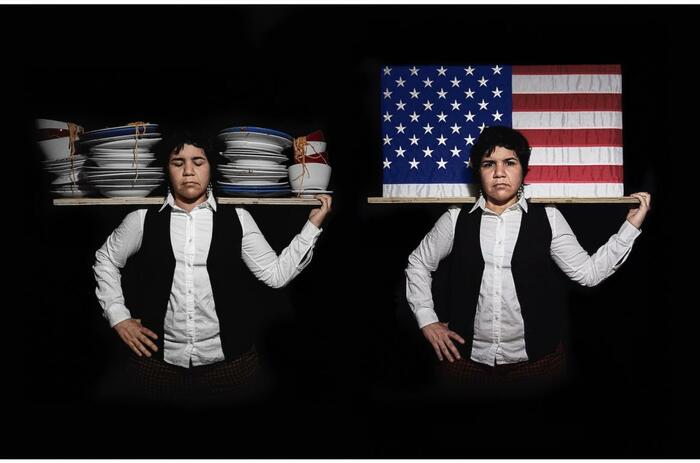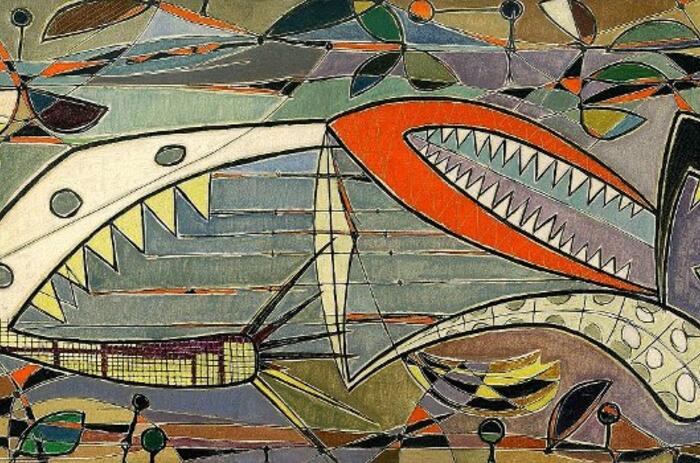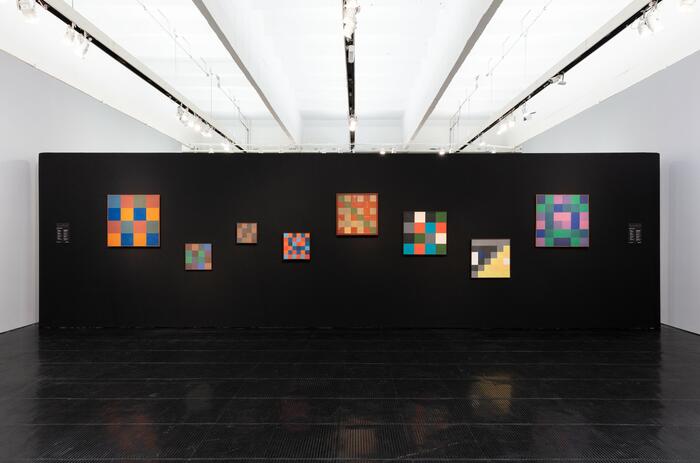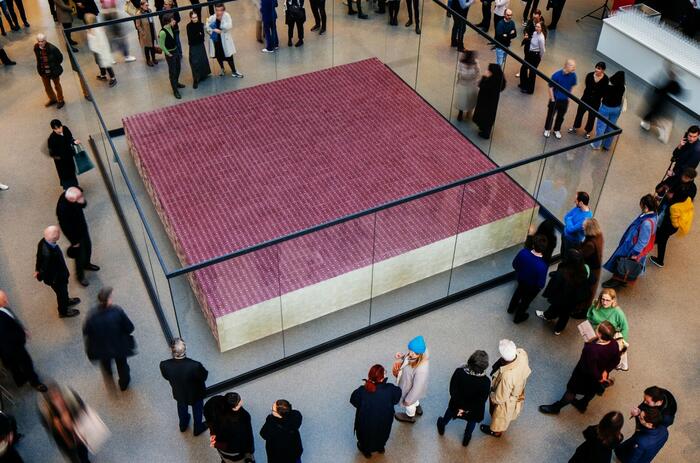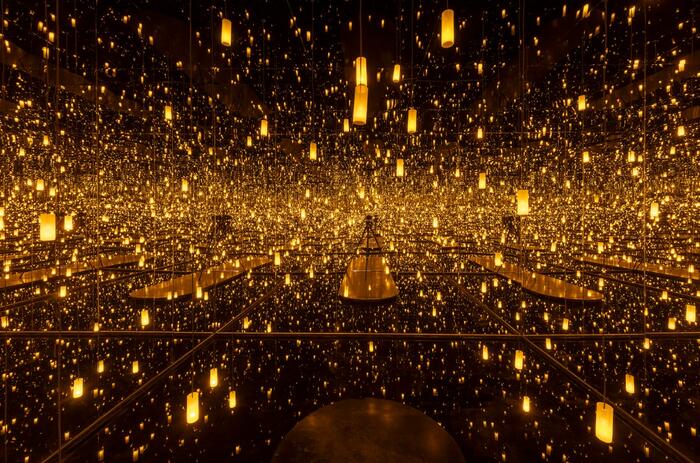THE EXHIBITION AND HOSTING OF THE BLACK MUSEUM HONOURING BRAZILIAN ARTIST ABDIAS NASCIMENTO
Co-organized with IPEAFRO, Inhotim features Third act: Sortilege (Black Mystery) an exhibition with more than 180 works, including documents, books, and artworks by Abdias Nascimento.
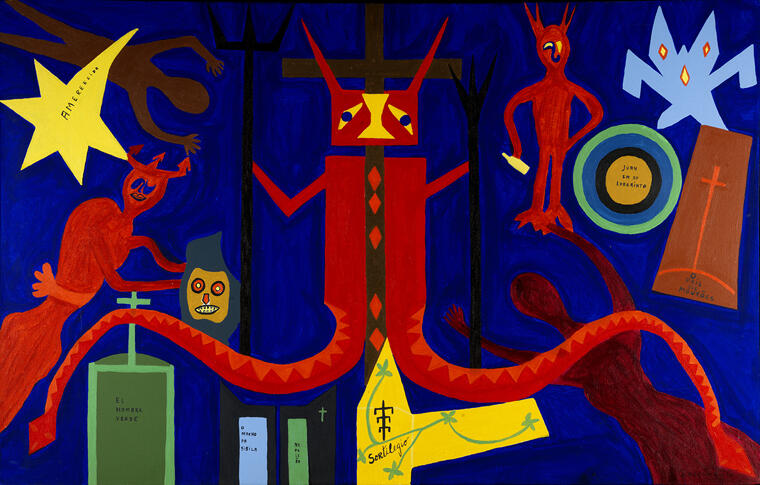
Over the course of more than two years, in partnership with the Afro-Brazilian Studies and Research Institute (IPEAFRO), Inhotim is hosting a museum on its premises: the Museu de Arte Negra (Black Art Museum), conceived by Abdias Nascimento (1914-2011) in the early 1950s and now under the care of IPEAFRO.
The exhibition Terceiro Ato: Sortilégio (Mistério Negro) (Third Act: Sortilege (Black Mystery), will be inaugurated at Galeria Mata. Sortilégio (Mistério Negro) (/Sortilege (Black Mystery) is the name of the first play written by Abdias, a drama significantly marked by the linguistic and symbolic structures of Afro-Diasporic traditions. Third Act: Sortilege (Black Mystery), addresses the artist's period of exile, between 1968 and 1981, and the dissemination of Brazilian Black art and his own artistic production internationally.
"Nascimento maintained his interest in African ancestral traditions as the foundation for his artistic production. Thus, this constant connection to the knowledge systems of Afro-Diasporic religions is at the heart of his thinking as an intellectual and artist", says Deri Andrade, assistant curator at Inhotim.
Some of the works exhibited in the show are by Brazilian artists who were active in the international art scene, mainly in New York, while Abdias Nascimento wasthere, reflecting their experiences in a foreign land. The thematic nuclei of the exhibition seek to reaffirm the idea of the Black Art Museum as a collective museum, formed by artists with whom Abdias interacted during his lifetime.
Third Act: Sortilege (Black Mystery) brings to the public more than 180 works, including works by Abdias Nascimento and other artists such as Mestre Didi, Rubem Valentim, Melvin Edwards, Regina Vater, Manuel Messias, Emanoel Araujo, Hélio Oiticica, Anna Bella Geiger, Anna Maria Maiolino, Iara Rosa, Romare Bearden, LeRoy Clarke, as well as books and research documents consulted by Abdias on Candomblé and the Orixás.
The exhibition features a thematic nucleus dedicated to Exu, the Orixá (deity) present in many of Nascimento's works. Exu is the Orixá of communication, guardian of paths. "Abdias thinks of the Orixás, ritual symbols, and ancestral languages as points of departure for a Pan-African endeavor. In his work, he recaptures the meaning of Candomblé as a conception of life and philosophy of the universe", explains Inhotim curator Douglas de Freitas.
-
Vistas de la exposición "Terceiro Ato: Sortilégio". Crédito: Tiago Nunes.
-
Vistas de la exposición "Terceiro Ato: Sortilégio". Crédito: Tiago Nunes.
-
Vistas de la exposición "Terceiro Ato: Sortilégio". Crédito: Tiago Nunes.
-
Vistas de la exposición "Terceiro Ato: Sortilégio". Crédito: Tiago Nunes.
-
Vistas de la exposición "Terceiro Ato: Sortilégio". Crédito: Tiago Nunes.
-
Abdias Nascimento, O Vale de Exu. Nova Iorque, EUA, 1969. Crédito: Museu de Arte Negra/Ipeafro. Acrílico sobre tela, 80 x 127 cm.
-
Abdias Nascimento, Oxum em Êxtase. Búfalo, EUA, 1975. Crédito: Museu de Arte Negra/Ipeafro. Acrílico sobre tela, 153 x 102 cm.
-
Abdias Nascimento, Raízes n. 2: Tributo a Aguinaldo Camargo. Rio de Janeiro, 1988. Crédito: Museu de Arte Negra/Ipeafro. Acrílico sobre tela, 100 x 150 cm.
-
Abdias Nascimento, Exu Black Power n. 2 (Homenagem a Rubens Gerchman). Nova Iorque, EUA, 1969. Crédito: Museu de Arte Negra/Ipeafro. Acrílico sobre tela, 76 x 60 cm.
-
Abdias Nascimento durante apresentação da peça Sortilégio, 1957. Fotografia de José Medeiros.
About the Black Art Museum
Since the 1940s, Abdias Nascimento and his colleagues at Black Experimental Theater (TEN) had been working towards the social valorization of Black people and Afro-Brazilian culture through art and education. TEN sought to outline a new aesthetic and theatrical style, and thus laid the foundation for the creation of the Black Art Museum project. It was TEN that, in 1950, in Rio de Janeiro, organized the First Congress of Brazilian Blacks, where the "aesthetics of Blackness" was discussed, as well as ways of giving visibility and value to the production of Black artists and those who dealt with Black culture in their works. The Congress plenary approved a resolution on the need for a Black art museum. TEN took on the project, and that's how the Black Art Museum project was born.
The Black Art Museum collection comprised bypaintings, drawings, engravings, photographs, sculptures, among others, in a plurality of media and techniques, started to tak shape with donations by artists in dialogue with TEN activists and intellectuals. In 1955, TEN promoted a plastic arts contest and an exhibition on the theme of the Black Christ. The inaugural exhibition of the Black Art Museum collection opened on May 6, 1968, at the Museum of Image and Sound in Rio de Janeiro. Nascimento seized the opportunity presented by commemoration of the 80th anniversary of the abolition of slavery, which occurred in Brazil in 1888, to make the exhibit happen. However, he and his team were fully aware that the underpinnings of the colonial slave-owning structures were perpetuated in the contemporary world through structural racism, veiled by the notion of racial democracy. Without reparatory measures such as access to employment, culture and education, abolition had resulted in the social, economic, political and cultural exclusion of the newly freed Black population.
Act Three: Sortilege (Black Mystery). Abdias Nascimento and the Black Art Museum.
Until August 6, 2023.
Galeria Mata, Instituto Inhotim. Rua B, 20, Inhotim. Brumadinho, MG Brazil.


